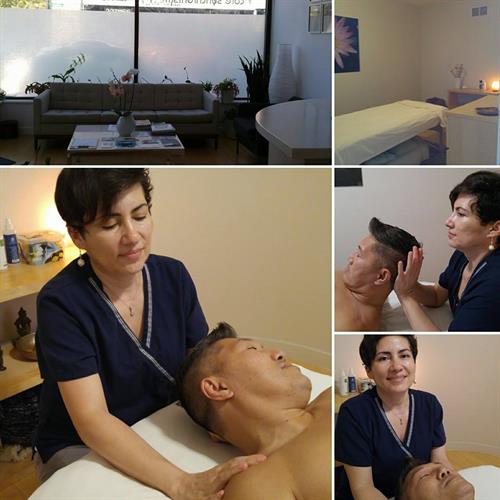A rotator cuff injury is a common cause of pain and disability among adults. In 2008, close to 2 million people in the United States went to their doctors because of a rotator cuff problem.
Injury will weaken your shoulder. This means that many daily activities, like combing your hair or getting dressed, may become painful and difficult to do.
The goal is to achieve pain relief and improved strength by relieving inflammation and restoring shoulder joint mechanics.
Rehab doesn’t have to be painful or grueling there is an alternative.
Neuromuscular Therapy can be essential for restoring coordination and strength to weakened, “shut down,” compensated shoulder muscles. It helps get you out of the compensation pattern and over what you may experience as an invisible barrier you can’t seem to get past in your rehab exercise efforts.
Who is at risk
•Repetitive stress. Repeating the same shoulder motions again and again can stress your rotator cuff muscles and tendons. Baseball, tennis, rowing, and weightlifting are examples of sports activities that can put you at risk for overuse tears. Many jobs and routine chores can cause overuse tears, as well.
•Lack of blood supply. As we get older, the blood supply in our rotator cuff tendons lessens. Without a good blood supply, the body’s natural ability to repair tendon damage is impaired. This can ultimately lead to a tendon tear.
•Bone spurs. As we age, bone spurs (bone overgrowth) often develop on the underside of the acromion bone. When we lift our arms, the spurs rub on the rotator cuff tendon. This condition is called shoulder impingement, and over time will weaken the tendon and make it more likely to tear.
Symptoms
•Shoulder pain at the tip of the shoulder and the upper, outer arm
•Pain at rest and at night, particularly if lying on the affected shoulder
•Pain when lifting and lowering your arm or with specific movements
•Weakness when lifting or rotating your arm
•Crepitus or crackling sensation when moving your shoulder in certain positions
Over-the-counter medication, such as aspirin or ibuprofen, may relieve the pain at first. Over time, the pain may become more noticeable at rest, and no longer goes away with medications.
Some general guidelines to decrease shoulder strain with activities include:
•Lift objects close to the body.
•Only lift light weights and limit lifting to below shoulder level.
•Do sidestroke or breaststroke when swimming.
•Throw balls underhand or sidearm.
•Avoid pushing exercises at the gym (eg, pushups, bench press, flys, shoulder press)
•Do not serve overhand in tennis.
•Maintain good posture with writing, assembly work, and other tasks by keeping the shoulder blades down and back
Tired of shoulder pain keeping you from doing the things you love? Contact Mara today to schedule a consultation and get out of pain!
Neuromuscular Therapy Testimonial
Once or twice a year I will water ski, snow ski, or ride horses. I enjoy swimming, walking, using the Wii Fit program, and occasionally adding hand weights and time on the elliptical trainer. I do something active about 5 days a week.
I had a condition called “frozen shoulder.” The pain and limited range of motion was preventing me from exercising normally and doing my daily activities. I have also had chronic neck and upper back pain.
My Chiropractor referred me to Mara and in conjunction with physical therapy and chiropractic treatment; neuromuscular therapy has helped my shoulder become practically pain-free! I have less pain, more range of motion, more awareness of what my body is doing and the stresses I put on it. I definitely recommend Mara J.Rainwater Plano 2011
